What Is Viscose Fabric? Is It Better Than Cotton?

- Viscose, a sustainable semi-synthetic fabric made from wood pulp, offers breathability and a luxurious feel, with bamboo and eucalyptus varieties known for their moisture-wicking properties, although eucalyptus farming can harm the environment.
- Cotton, a natural fabric with a long history, provides lightweight, breathable, and cool sheets, with Egyptian and Pima cotton being particularly notable for their softness and durability.
- When considering factors such as feel, temperature regulation, cost, sustainability, maintenance, and toxicity, both viscose and cotton have their respective advantages and drawbacks, guiding the choice between the two fabrics for bed sheets based on personal preferences and priorities.
Viscose fabric is known for its lightness and breathability. It’s often a more sustainable fabric than many of the other offerings on the market today. However, many people aren’t sure how it stacks up compared to another common plant-based textile: cotton.
As far as sheet sets go, cotton is just about the gold standard. It’s soft and comfortable yet low-maintenance and cost-effective breathable fabric. This balance makes it most people’s go-to option when it comes to bed sheets.
However, the proliferation of viscose is changing all that. As the popularity of viscose fibers grows, it’s becoming one of cotton’s most formidable competitors. The difference between viscose and cotton is one is made of artificial materials and the other is a more natural fiber.
Below, we’ll talk about the differences between these two fabrics including fabric quality and discuss their advantages and drawbacks.
Viscose Fabric
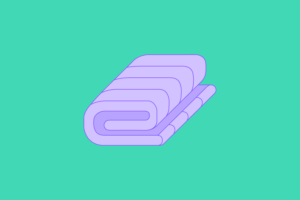 Viscose is a semi-synthetic fabric made from processed wood pulp. Unlike synthetic fibers such as petroleum-based spandex or polyester, viscose production starts out as a plant material. The viscose process starts with chemical additives are used to spin yarn from the cellulose of natural wood pulp. The regenerated cellulose fibers are then woven to create a fabric that’s also referred to as rayon fibers.
Viscose is a semi-synthetic fabric made from processed wood pulp. Unlike synthetic fibers such as petroleum-based spandex or polyester, viscose production starts out as a plant material. The viscose process starts with chemical additives are used to spin yarn from the cellulose of natural wood pulp. The regenerated cellulose fibers are then woven to create a fabric that’s also referred to as rayon fibers.
While viscose is only one type of rayon (you also have cuprammonium, modal, and lyocell/Tencel™), it’s one of the most common types because it’s breathable and lightweight like cotton but shiny and luxurious like silk. In fact, viscose is often used for natural materials as a plant-based artificial silk.
Bamboo Viscose
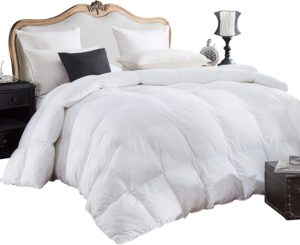 The largest grass species in the world, bamboo is a wood-like substance that can be spun into viscose threads. Bamboo sheets are naturally breathable and moisture-wicking. It also encourages evaporation, so you’ll wake up in the morning without being sweaty.
The largest grass species in the world, bamboo is a wood-like substance that can be spun into viscose threads. Bamboo sheets are naturally breathable and moisture-wicking. It also encourages evaporation, so you’ll wake up in the morning without being sweaty.
Bamboo is also highly sustainable. It’s a fast-growing grass that requires no fertilizer and can regenerate itself from its own roots. You don’t need to replant bamboo. It can just be cut down and allowed to regrow.
Eucalyptus Viscose
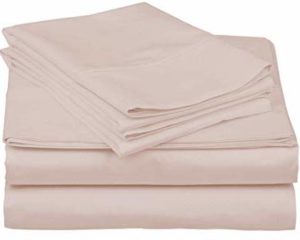 Eucalyptus is one of the most commonly used trees for viscose fabric. Like bamboo viscose, eucalyptus fabric is absorbent, sweat-wicking, and breathable. That means it makes for great sheets for hot sleepers.
Eucalyptus is one of the most commonly used trees for viscose fabric. Like bamboo viscose, eucalyptus fabric is absorbent, sweat-wicking, and breathable. That means it makes for great sheets for hot sleepers.
Eucalyptus trees are also considered sustainable like bamboo is. This tree doesn’t require a lot of water, fertilizer, or pesticides, and it can also self-regenerate. That means there’s no need to replant after harvest.
One thing to keep in mind is that eucalyptus farming can sometimes degrade the environment. For example, in parts of Southern Europe, native forests have been felled to stand up massive eucalyptus plantations. These plantations have displaced native wildlife and facilitated the proliferation of the fast-growing eucalyptus as an invasive species. Thus, in comparison to bamboo, eucalyptus might not be as sustainable a source of cellulose.
As a side note, we mentioned Tencel™ earlier as another type of rayon fabric. Tencel™ sheets are typically made from eucalyptus fibers and offer cooling benefits. Like viscose, Tencel™ has been compared to cotton sheets. For our in-depth comparison of the two, read our guide Tencel vs. Cotton Sheets: What’s the Difference?
Cotton Fabric
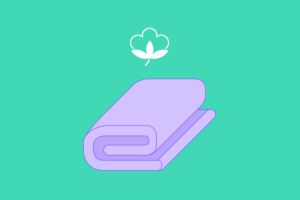 Cotton is one of the oldest and most widely used natural fibers in the world. Part of cotton’s popularity is that it doesn’t need to undergo a lot of processing to be spun into a fabric. Cotton fibers are already long and stringy like thread, making it easy for ancient peoples to use the natural fabric for textiles.
Cotton is one of the oldest and most widely used natural fibers in the world. Part of cotton’s popularity is that it doesn’t need to undergo a lot of processing to be spun into a fabric. Cotton fibers are already long and stringy like thread, making it easy for ancient peoples to use the natural fabric for textiles.
Like viscose, cotton sheets are lightweight, breathable, and cool. Unlike viscose, cotton doesn’t require as many processing chemicals to make it suitable for a natural fabric. It basically just needs to be seeded, washed, and woven, and it’s good to go.
Egyptian Cotton
 Despite what its name suggests, Egyptian cotton isn’t only grown in Egypt anymore. While it gets its name from having been originally cultivated along the Nile, Egyptian cotton is a variety that is now grown in several different nations. Only a small percentage of cotton labeled Egyptian cotton was actually grown in Egypt.
Despite what its name suggests, Egyptian cotton isn’t only grown in Egypt anymore. While it gets its name from having been originally cultivated along the Nile, Egyptian cotton is a variety that is now grown in several different nations. Only a small percentage of cotton labeled Egyptian cotton was actually grown in Egypt.
This cotton variety is one of the most luxurious bedding material in the world. Its extra-long fibers make it soft and durable, meaning not only will Egyptian cotton sheets have a better feel than shorter staple cotton fabrics, but it will also be lower maintenance and last longer.
Pima Cotton
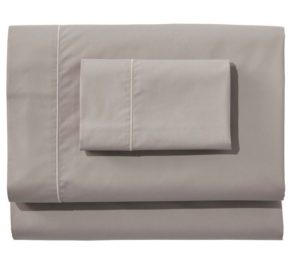 Another long-staple cotton, Pima cotton, is also commonly used for higher-end sheets. Just like Egyptian cotton, Pima cotton is an extra-long staple (ESL) cotton that is both more luxurious in feel and more durable than shorter staple cotton or other fabrics.
Another long-staple cotton, Pima cotton, is also commonly used for higher-end sheets. Just like Egyptian cotton, Pima cotton is an extra-long staple (ESL) cotton that is both more luxurious in feel and more durable than shorter staple cotton or other fabrics.
Viscose vs. Cotton—How Do They Stack Up?
Both these fabrics are pretty different when it comes to manufacturing and just about everything else. You’ll have to decide which of the following criteria you prioritize when it comes to choosing bedding.
Feel
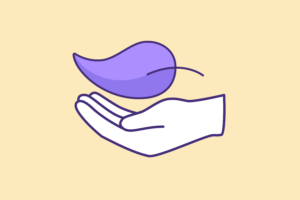 When it comes to feel, it’s hard to beat a high thread count Egyptian cotton sheet, but viscose puts up some fierce competition. Both fabrics are luxurious. While Egyptian cotton has a soft and supple feel, viscose fabric will feel smooth like silk. The two competitors are fairly equal in this category, so your personal preference will have to be the deciding factor.
When it comes to feel, it’s hard to beat a high thread count Egyptian cotton sheet, but viscose puts up some fierce competition. Both fabrics are luxurious. While Egyptian cotton has a soft and supple feel, viscose fabric will feel smooth like silk. The two competitors are fairly equal in this category, so your personal preference will have to be the deciding factor.
As a reminder, while thread count can give you an idea of a sheet’s feel, it’s not the only factor to consider. See our guide What is the Highest Thread Count for Sheets? for more information.
Temperature
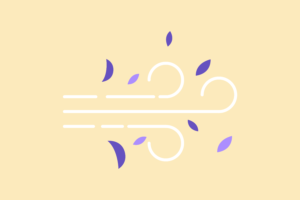 Both cotton and viscose fabrics are absorbent and good at moving body heat away from you. Viscose is breathable and lightweight, so if you sleep hot and want cooling sheets, you might be better off with this moisture-wicking fabric.
Both cotton and viscose fabrics are absorbent and good at moving body heat away from you. Viscose is breathable and lightweight, so if you sleep hot and want cooling sheets, you might be better off with this moisture-wicking fabric.
Cotton’s coolness depends on the weave. If it’s woven into a lightweight fabric, such as percale sheets, then cotton will be just as cooling and breathable as viscose—maybe even cooler. Heavier weaves like flannel will not keep you cool, as they’re made to be cozy and warming.
Cost
 On average, viscose is a bit more budget-friendly than cotton. The production of viscose is cheaper than that of cotton. Viscose manufacturing sites usually pass those savings on to the customer.
On average, viscose is a bit more budget-friendly than cotton. The production of viscose is cheaper than that of cotton. Viscose manufacturing sites usually pass those savings on to the customer.
If you get an ESL cotton or an organic cotton sheet set, the price difference is even starker. That means viscose is the clear winner in this category.
You can save on both types of sheets by browsing the accompanying bedding deals that take place during the year’s big mattress sales:
- Best MLK Day Mattress Sales
- Best Presidents Day Mattress Sales
- Best Sleep Awareness Week Mattress Sales
- Best Memorial Day Mattress Sales
- Best 4th of July Mattress Sales
- Best Labor Day Mattress Sales
- Best Columbus Day Mattress Sales
- Best Black Friday Mattress Sales
- Best Cyber Monday Mattress Sales
Sustainability
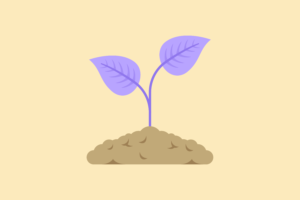 When it comes to crop sustainability, the viscose production process is the clear winner again. Cotton requires a lot of water, fertilizer, direct sunlight and pesticides to grow properly. Cotton also ruins the soil in which it’s grown, meaning it requires lots of land because fields may need to be rotated with things like sugar cane.
When it comes to crop sustainability, the viscose production process is the clear winner again. Cotton requires a lot of water, fertilizer, direct sunlight and pesticides to grow properly. Cotton also ruins the soil in which it’s grown, meaning it requires lots of land because fields may need to be rotated with things like sugar cane.
Aside from the dangers of eucalyptus as an invasive species, both bamboo and eucalyptus are more eco-friendly. They don’t need much pest management, they don’t require a lot of water, and they can regenerate themselves after harvest without much fuss. Viscose is made of sustainable fiber, cotton is not.
Maintenance
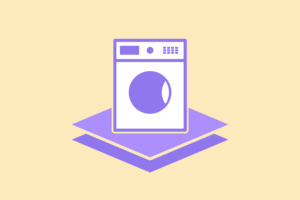 Due to the structure of their threads, viscose fabrics aren’t always easy to maintain. Viscose can become weak when wet, meaning tossing it in the washer and dryer can cause it to shrink, lose its softness, or even tear. You’ll need to hand wash and line dry most viscose sheets. Some may even need dry cleaning.
Due to the structure of their threads, viscose fabrics aren’t always easy to maintain. Viscose can become weak when wet, meaning tossing it in the washer and dryer can cause it to shrink, lose its softness, or even tear. You’ll need to hand wash and line dry most viscose sheets. Some may even need dry cleaning.
Cotton, meanwhile, is strong and durable, especially if it’s organic. You can toss the best organic cotton sheets in the washer with cold water and a mild detergent, then dry them on low, and you normally won’t have to worry about much more than a little shrinkage. This makes cotton superior to viscose when it comes to maintenance.
As a side note, we recommend changing and washing your sheets at least once a week to prevent allergens and other irritants from settling in your bed.
Toxicity
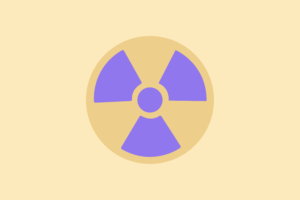 Cotton takes the prize here because cotton is just, well, cotton. Organic cotton certified under the Global Organic Textile Standard (GOTS) will have few to no processing chemicals and be about as pure as you can get. Even non-organic cotton fabrics still don’t need a ton of chemicals during their manufacture.
Cotton takes the prize here because cotton is just, well, cotton. Organic cotton certified under the Global Organic Textile Standard (GOTS) will have few to no processing chemicals and be about as pure as you can get. Even non-organic cotton fabrics still don’t need a ton of chemicals during their manufacture.
Meanwhile, the viscose manufacturing process is full of solvents, caustic soda, and just about all the other toxic chemicals you can think of. Chemicals used to manufacture viscose can include carbon disulfide, sulfuric acid, and sodium hydroxide.
You don’t have to worry too much about exposure as a consumer (the fibers and fabric go through an extensive cleaning process). However, workers at factories and the surrounding environment may be in significant danger from these toxins. This partly negates the greenness of bamboo and eucalyptus growth and makes cotton the winner in this category.
FAQs
Is viscose better than silk?
That depends on what you seek. Viscose is a cheaper alternative to silk, and it’s also more durable, so it will resist damage and last longer. On the flip side, if you’re looking for the smoothest, most luxurious feel, nothing beats silk. While viscose might be shiny like silk, it feels more like cotton and does not have that silky smooth feel that the real deal boasts.
What do they make out of viscose besides sheets?
Viscose is a common fabric used in garments and even upholstery. Blouses, slacks, and activewear are all often made of viscose rayon. Viscose fabric also makes for a great comforter or duvet. It’s breathable and absorbent, which will allow you to enjoy your warm and cozy comforter without breaking a sweat.
How should I wash my viscose sheets?
The label of the sheets will tell you exactly how to wash and dry them. As a general rule, you should not toss your viscose sheets into the washing machine as you would cotton.
Viscose gets weaker when it gets wet, and the agitation from the washer can damage the threads or cause shrinkage. It’s better to soak your sheets in the bathtub and line dry them. Dry cleaning may also be required, depending on the care instructions.
Does viscose fabric have a thread count?
Some fabrics are measured in thread count, while others are measured in weight, more specifically GSM or grams per square meter. You might run across viscose fabric measured in either GSM or thread count.
A good thread count for a set of viscose sheets is 200 to 500. Since the fibers are longer than cotton fibers, the thread count for viscose sheets doesn’t need to be as high. GSM is a little different. The lower the GSM, the lighter the fabric, so if you want a cooling, lightweight viscose sheet, it might be best to stick with 90 to 120 GSM.
Which is more hypoallergenic, viscose or cotton fabric?
If you have allergies, cotton may be the way to go. Viscose can resist bacteria, fungi, and other common allergens. Cotton can as well, and it has the added benefit of having fewer processing chemicals. If you have sensitivities to synthetic chemicals, you’re better off with cotton sheets.
What is high wet modulus rayon?
High wet modulus rayon is a kind of versatile fabric viscose that becomes stronger when wet. It, like cotton, may be mercerized. HWM rayons are often referred to as “polynosic.” Polynosic fibers are dimensionally stable and do not shrink or stretch when wet, as many rayons do.
Bottom Line
Though they’re very different fabrics, both cotton and viscose have their advantages and drawbacks. If you’re looking for a silky sheen or a budget-friendly sheet, go with viscose. If it’s low maintenance and durability you’re after, cotton is your friend. Of course, there are other types of bed sheets you can consider if neither of these sounds right for you.
